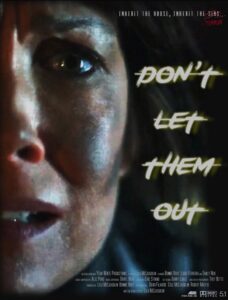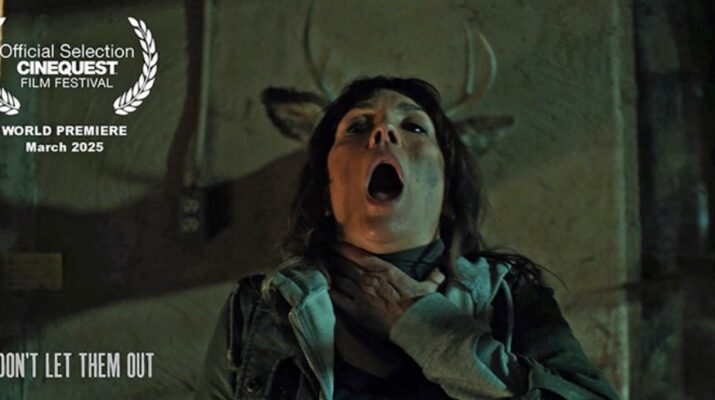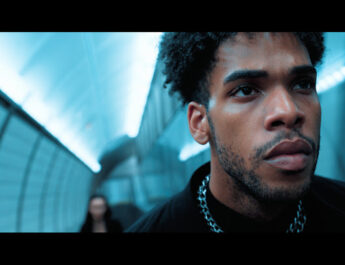In the new film Don’t Let Them Out, composer Alec Puro faced a challenge unlike most horror projects: building an entire sonic world basically around a single character in a remote, desolate setting. With minimal dialogue, vast stretches of silence, and an environment steeped in psychological tension, Puro’s score had to be both restrained and deeply affecting. In this interview, he discusses the delicate art of creating a score for such a contained film, blending organic and electronic textures, and how his recent work—including the launch of his royalty-free music platform Viralnoise—is shaping the next wave of horror compositions and sound design.
Don’t Let Them Out was directed by Lila McLaughlin and is currently screening at film festivals.

Don’t Let Them Out is such a contained film—did you approach spotting sessions differently compared to a film with multiple locations and characters?
Absolutely. What made Don’t Let Them Out particularly challenging and exciting was that almost the entire film takes place in this isolated, middle-of-nowhere setting with essentially one actor carrying the whole narrative. The spotting sessions were really about identifying where music could enhance the psychological landscape without becoming intrusive. When you’re working with that much silence and space, every musical choice becomes magnified, so you have to be really intentional about when the score enters and exits. It’s completely different from a multi-location film where you might use music to help with transitions or establish different environments.
How early in production did you start experimenting with sonic ideas for Don’t Let Them Out, and did any early sketches make it into the final cut unchanged?
For the most part, my approach to composing always starts at the piano no matter what the genre. I like to read the script and find out as much as possible about what the director is thinking in terms of the story and the type of soundscape they want to create. With Don’t Let Them Out, I got hired a little later in the process and they already had a locked cut. From that point on I started experimenting with minimalistic atmospheric textures to try to capture that feeling of dread and isolation.
When working on a film with such sparse dialogue, do you collaborate more closely with the director or the sound designer to ensure the music fills the right emotional space?
I work very closely with both, but the collaboration with the sound designer becomes even more crucial on a film like this. I learned this approach working on Black Summer – the score and sound design become one at many points, which really helps build the anxiety and danger in a scene. With Don’t Let Them Out, we had to create a seamless soundscape that didn’t distract from what was happening but enhanced everything in a realistic and terrifying way. Sometimes the most effective thing you can do is pull the music out completely and let the natural sounds and silence do the work.
Were there any unconventional instruments or sound sources you used in Don’t Let Them Out to capture the isolation or psychological tension?
Yes, we actually sampled this super old harpsichord that had been abandoned for years on the property of the creepy remote location where the shoot took place. Using this harpsichord as part of the score created a very unsettling texture and undertone that suited the psychological landscape of the film.

How do you decide when to use analog synth textures versus purely acoustic or organic sounds in horror scoring?
It really depends on the story and what the director is looking for. I love using different analog synths to find cool sounds and textures, but sometimes the organic approach works better. With Don’t Let Them Out, the abandoned harpsichord we found on location gave us this perfect blend – it was acoustic but had this decayed, unsettling quality that fit the psychological horror elements. For something like Spin the Bottle, I went more industrial and synth-driven to reflect the supernatural evil, while Black Summer called for that very dark atmospheric electronic soundscape.
Do you consciously structure horror scores to evolve over the course of a film, or is it more about maintaining a steady sonic “world” from start to finish?
I approach any show or film as one complete thought in terms of creating themes that reoccur and build throughout. With horror specifically, you want to create this underlying sense of dread that builds throughout, but you also need moments where you pull back completely. The isolation and psychological tension that comes from silence can be just as terrifying as any music cue. It’s about finding the right balance and knowing when to step aside and let other elements tell the story.
How do you musically balance fear with empathy in a film like Don’t Let Them Out, where the audience is so closely tied to one character’s experience?
The real creative puzzle was figuring out how to use the score to support these long stretches of silence and solitude without becoming intrusive or drawing attention away from the performance. I took a very minimalistic atmospheric approach so the music could really enhance that feeling of dread and isolation in a realistic way, sometimes without the audience even noticing there’s music at all. The goal is to support the character’s emotional journey without overpowering it.
Can you tell us about your new company Viralnoise and how you see it impacting not only horror creatives, but creatives in every genre?
Viralnoise is a game-changing royalty-free music subscription service I founded in 2025, designed specifically for digital creators of all kinds. The platform provides access to over 35,000+ music tracks and 30,000+ high-quality sound effects that were previously reserved for use in major TV shows, blockbuster films, big-budget advertisements, and AAA video games. Our goal is simple: to make Hollywood-grade audio accessible to all creators. Whether you’re a YouTuber, TikTok influencer, podcaster, filmmaker, or game developer, Viralnoise eliminates licensing restrictions and high costs with affordable subscriptions starting at $8.99 monthly.
Has your work on Don’t Let Them Out influenced the kind of horror tracks you’re curating for Viralnoise?
Absolutely. I’m seeing creators moving away from the traditional orchestral horror sound and gravitating toward more atmospheric, electronic, and industrial textures – similar to what I’ve been doing with projects like Black Summer, Spin the Bottle, and Don’t Let Them Out. There’s also a big demand for minimalistic, tension-building cues that can work under dialogue or long suspenseful sequences. We’re constantly adding new music weekly from our global network of 75+ award-winning composers, and we make sure to include plenty of horror tracks and those subtle tension-building pieces that modern horror creators need.
With AI-assisted tools becoming more common, do you see technology changing the way you approach texture and atmosphere in your compositions?
I think we’re going to see even more integration between composers and technology, particularly AI tools that can help with the creative process while still maintaining that human touch that’s so essential to great music. We’ve incorporated AI-powered similar search into Viralnoise to help creators find the perfect track quickly – instead of scrolling through thousands of tracks, creators can copy/paste a reference track from Spotify or YouTube, and our AI will help match that with similar sounds from our catalog. But the human element, the emotional connection, the storytelling through music – that’s irreplaceable. Technology can help with organization and discovery, but creating that atmosphere and texture still comes from understanding the story and the characters.
(Interview courtesy of Jordan von Netzer)



